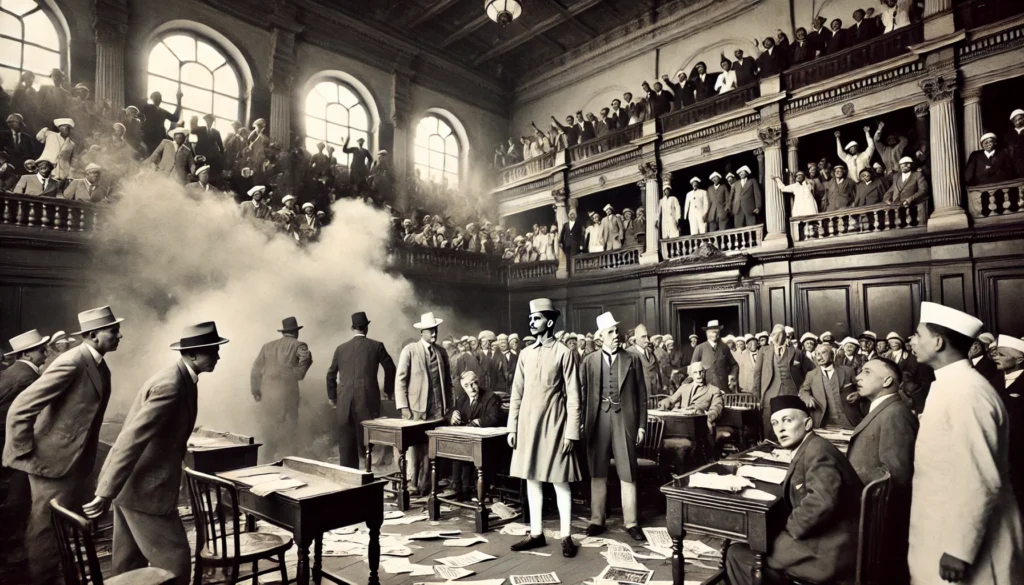
On April 8, 1929, Bhagat Singh and Batukeshwar Dutt carried out a dramatic act of protest by throwing two bombs inside the Central Legislative Assembly in Delhi. This was a carefully planned move to oppose the Public Safety Bill and Trade Disputes Bill, which were aimed at curbing civil liberties and suppressing revolutionaries.
The Plan and Execution
- Non-lethal Bombs: The bombs were low-intensity and specifically designed to make noise rather than cause casualties.
- Strategic Target: They were thrown into an empty section of the assembly hall to ensure no one was injured.
- Pamphlets and Slogans: As the smoke spread, Bhagat Singh and Dutt shouted “Inquilab Zindabad” (Long Live the Revolution) and threw pamphlets explaining their cause.
- No Attempt to Escape: Instead of running away, both revolutionaries stood firm and allowed themselves to be arrested, knowing they could use their trial as a political platform.
The Trial and Bhagat Singh’s Strategy
- Bhagat Singh viewed the trial as a way to expose British injustice and promote the revolutionary cause.
- He refused to apologize or defend himself in conventional terms, stating:
“We wanted to make the deaf hear, and for that purpose, the explosion was necessary.” - He read books in jail, wrote articles, and encouraged his fellow prisoners to fight for their rights.
Impact of the Incident
- The Assembly bombing electrified India’s youth, inspiring many to join the freedom struggle.
- Bhagat Singh emerged as a national hero, despite British attempts to portray him as a criminal.
- His famous slogan “Inquilab Zindabad” became a symbol of resistance against British rule.
This act was not just about throwing a bomb—it was about making a statement that shook the British Empire and awakened the spirit of revolution across India. 🚩